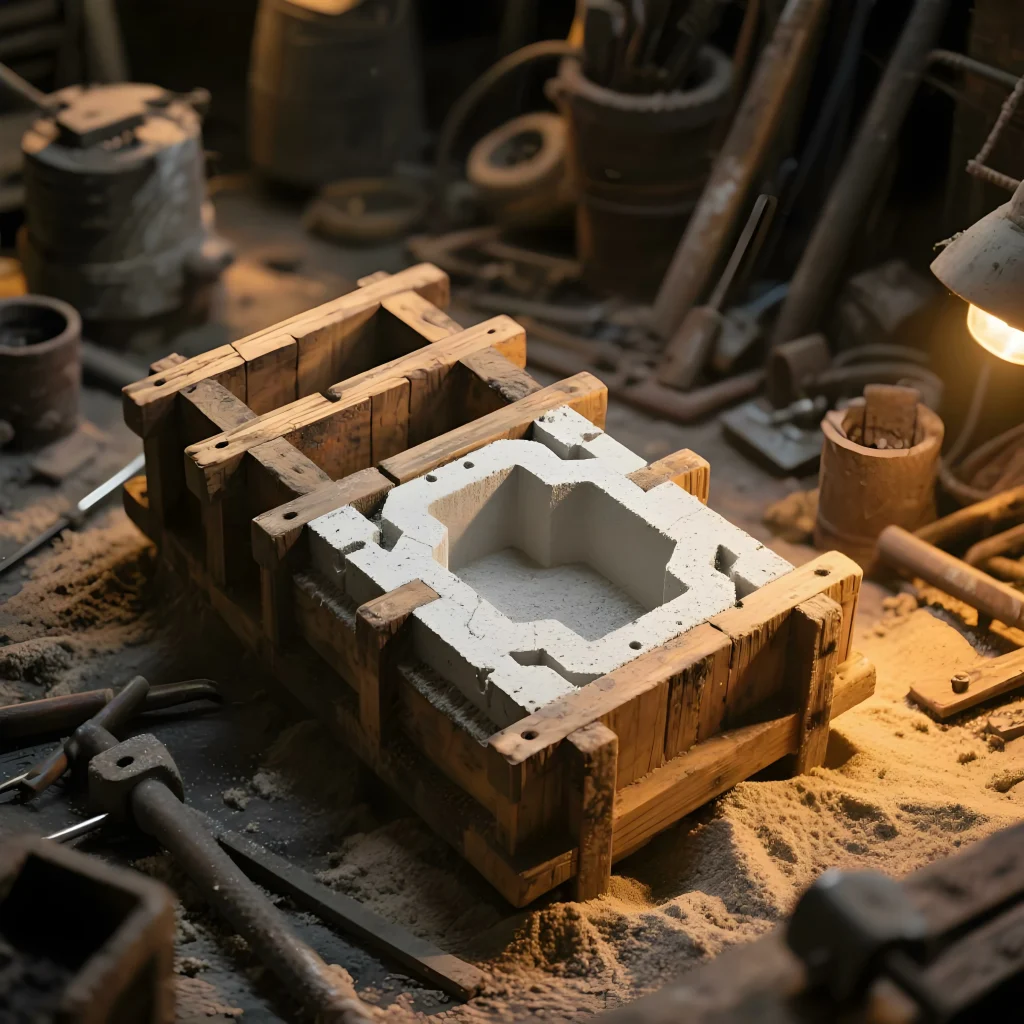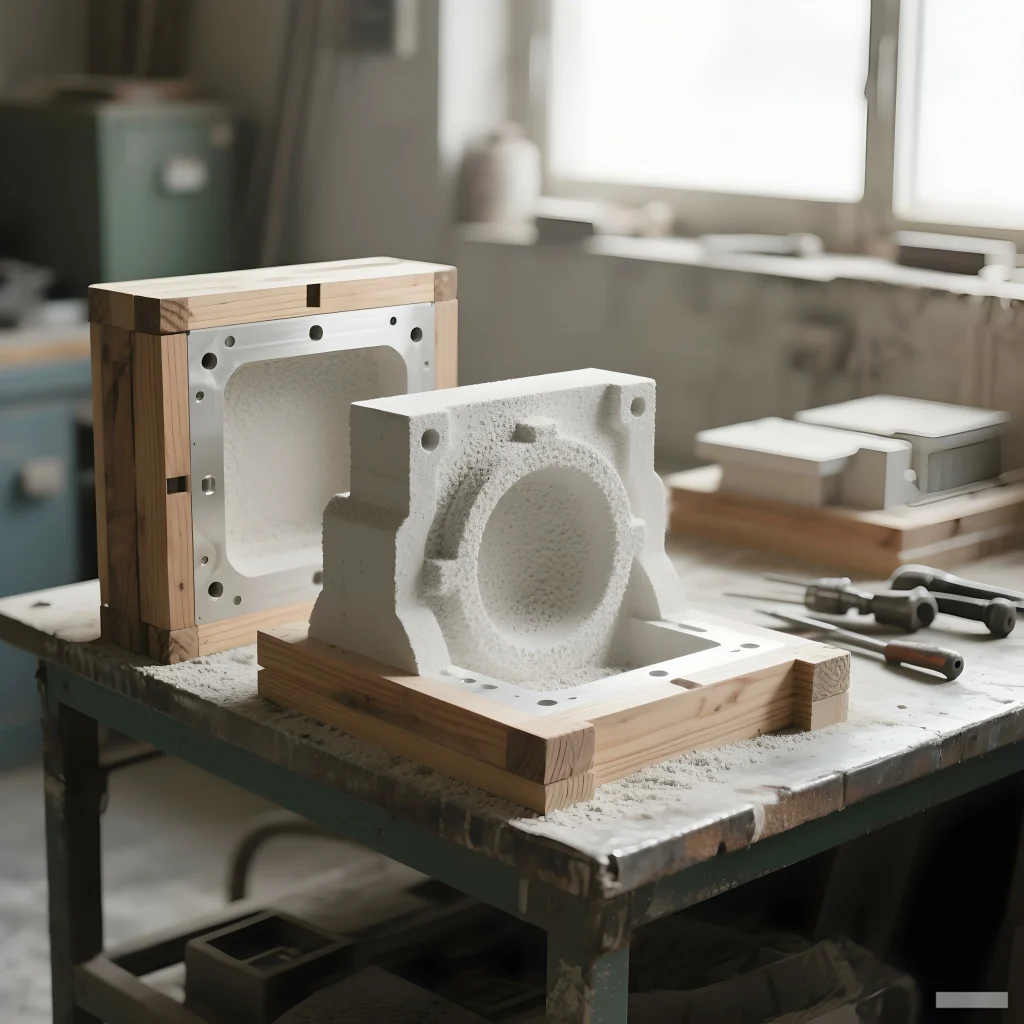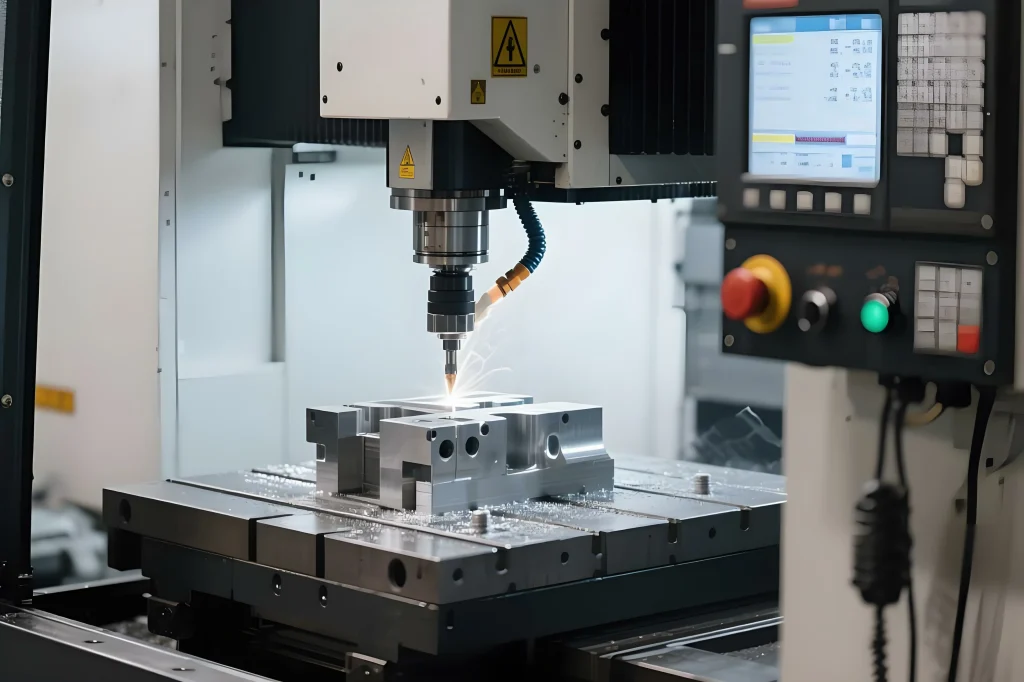1.Introduction to Foundry Pattern Making
Pattern making sits at the start of every solid casting job. A reliable foundry pattern shapes the flow of molten metal into tough, usable parts. At Welleshaft, we work close with customers on production pattern & foundry setups that balance cost and quality. This guide digs into both old-school and new-age foundry pattern making tools, materials, and Foundry Pattern Innovations that drive better results on the floor.
2.Tooling Method Selection – Choosing What Works in Foundry Tooling
Picking a foundry tooling method ain’t always simple. But the shape of your part, how many you need, and your budget usually point the way. Down below we’ve laid out some ways to look at both traditional and modern pattern tooling.
(1)Key Things That Matter in Pattern Tooling
- Complexity and Precision
Parts with twists and tight spaces need tech like 3D-printed patterns or robotic carving. That’s why casting pattern makers with rapid prototyping capabilities use them a lot. - How Many You’re Making
Big runs? Use strong stuff like polyurethane o wood patterns. Making just a few? You’re better off with newer tools from a custom foundry pattern maker for aerospace components. - What You’re Casting
Iron? Go wood. Aluminum? Stick with poly patterns. That’s how folks handle precision foundry pattern making for automotive casting - Money and Time
Old-school tools take time to set up. But they pay off when you’re casting hundreds. If you’re short on time or just testing ideas, next-gen stuff works better. Especially when asking how to choose foundry tooling for small-batch casting.
(2)Comparison of Foundry Tooling Methods
| Method | Best For | What It Does Well | What to Watch Out For |
| Wood Patterns | One-offs, testing, low-run jobs | Cheap, easy to tweak | Wears out fast, hates moisture |
| Polyurethane Patterns | Mid-to-big runs | Stays tough, handles detail | Costs more at the start |
| Robot-Milled Molds | Complex parts, short lead time | Works straight from CAD, skips pattern stage | Rough finish if not prepped right |
| 3D-Printed Molds & Cores | Tricky shapes, quick changes | Nails detail, skips draft angle limits | Grainy texture if curve too soft |
| Hybrid Tooling | Special parts, unique setups | Mix of old and new, flexible | Takes careful planning to combine |
3.Old-School Foundry Patterns That Still Work
Some foundry pattern makers stick with what’s proven. Especially when it’s cheaper, faster to fix, and easy to store in the back room of a busy foundry pattern shop.
1.Poly Patterns – Durable Tools for Long Runs
- Stays Strong: Doesn’t wear easy. Good for thousands of cycles.
- Keeps Shape: Holds detail real well. Even tight cuts stay sharp.
- Used In: Pattern tooling solutions for heavy equipment foundries where downtime costs money.
2.Wood Patterns – Quick Builds, Easy Changes
- Cheaper: Great for trial runs and design updates.
- Handy to Shape: Easy to cut and adjust, even with simple tools.
- Limits: Don’t like damp air. Not for jobs that last months.

4.New Tools, Fast Turns – Next-Gen Pattern Making
1. Patternless Tooling – From File to Mold
- No Physical Pattern: Just CAD + CNC = mold ready.
- Best When: Jobs are one-off or custom, like custom foundry pattern maker for aerospace components.
- Drawback: Surface might look rough unless extra steps added.
2. 3D Printed Molds – Complex Shapes Made Simple
- Why Use It?Hard-to-cut shapes, no draft angles, and rapid prototyping capabilities.
- Good For: Medium jobs like precision foundry pattern making for automotive casting or designs you’re still fine-tuning.
- Heads-Up: Curved areas might print with rough texture—depends on printer setup.
3. Hybrid Tooling – Old Meets New
- What It Is: Wood base with 3D bits added in.
- Why It Helps: Lowers cost but gives precision where you need it. Works well in pattern shop in foundry vs central tooling shop explained cases.
5.Storing Patterns Right: Foundry Innovations
Any busy pattern shop in foundry needs a place to keep tools safe and easy to find. Here’s how they do it:
(1)Dry Storage & Foundry Pattern Innovations
Moisture can warp your patterns, and heat doesn’t help either. That’s why smart shops make sure storage areas are dry, cool, and stable. Whether it’s a climate-controlled room or just wrapping patterns up real tight, keeping the environment steady is part of today’s Foundry Pattern Innovations—helping extend the life and shape of every tool on the rack.
(2)Tag Everything
Clear labels and a solid digital tracking system make it way easier to find the exact pattern you need—fast. This setup doesn’t just help with organization; it also shows which foundry patterns get used most, so teams can plan maintenance or upgrades without guesswork.
(3)Keep ‘Em Maintained
Fix any dings or cracks as soon as you spot them to prevent casting problems later on. Regular maintenance checks scheduled on a calendar help make sure nothing gets overlooked, keeping your patterns in good shape for every run.
(4)Wrap ‘Em Up
Store your patterns in bins or cover them to protect against dust and damage. Avoid stacking wood patterns directly on polyurethane or metal ones to prevent warping and wear.

6.People Also Ask (FAQs)
(1)What is foundry pattern making? Step-by-step
Start with the part design. Then model, shape the foundry pattern, test, and make the mold. Materials vary: wood, poly, or 3D print.
(2)What’s the difference between production pattern and foundry pattern?
A foundry pattern helps shape a casting. A production pattern is beefed up for speed and repeat use. See more in Production vs Foundry Patterns: What’s the difference.
(3)How do I choose foundry tooling for small-batch casting?
If you’re only making a few, avoid full tooling builds. Use 3D or hybrid methods instead. Learn more in how to choose foundry tooling for small-batch casting.
(4)What are the benefits of injection molding vs. traditional foundry patterns?
Injection molding’s great for plastic in large numbers. But if you need strong metal and flexibility, traditional foundry patterns win. See benefits of injection molding vs traditional foundry patterns.
(5)What tools do foundry pattern makers use for sand casting?
Depends. Some still use hand tools. Others use CNC routers or robots. Learn about foundry pattern maker techniques for sand casting.
(6)Are there DIY foundry pattern making tips for hobbyists?
Yep. Use pine, MDF, and simple designs. Free CAD tools help too. Explore DIY foundry pattern making tips for hobbyists.
(7)What makes a pattern shop in foundry different from a central tooling shop?
A pattern shop in foundry works hand-in-hand with casting crews. A central shop might serve many departments. Read pattern shop in foundry vs central tooling shop explained for details.
7.Why Welleshaft?
At Welleshaft, our crew doesn’t just build tools—we team up with customers to make patterns that match the job. Whether it’s a custom foundry pattern maker for aerospace components o pattern tooling solutions for heavy equipment foundries, we’ve got the chops.
With our own foundry pattern shop, nothing gets lost between teams. Just smoother casting, fewer delays, and patterns that earn their keep—powered by the latest Foundry Pattern Innovations that keep production sharp and efficient.
Thinking about precision foundry pattern making for automotive casting or wondering what is foundry pattern making process explained? Get in touch with us at Welleshaft.

